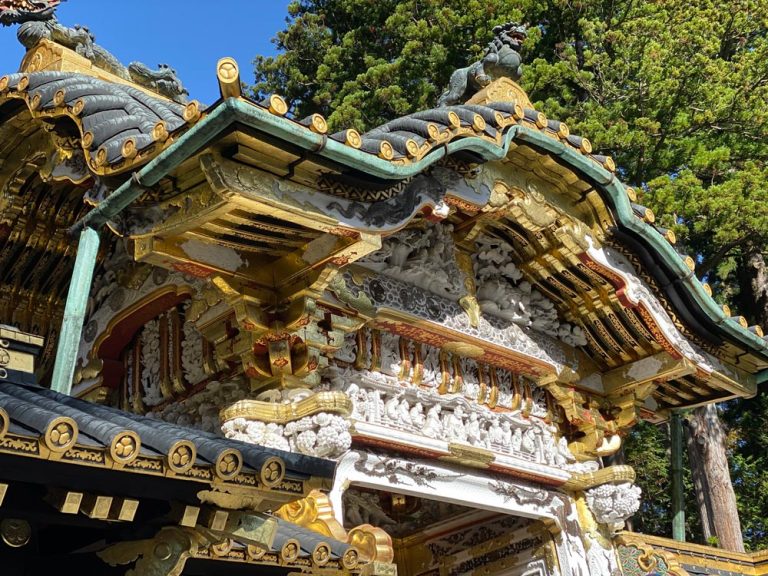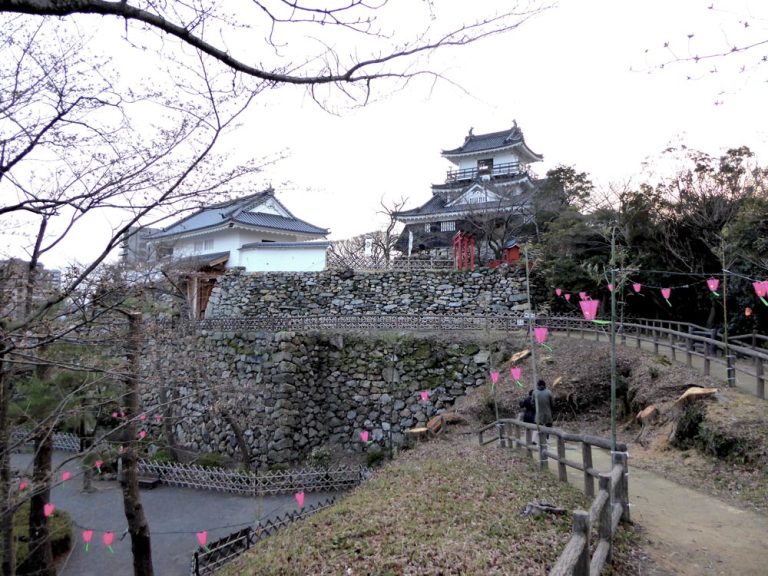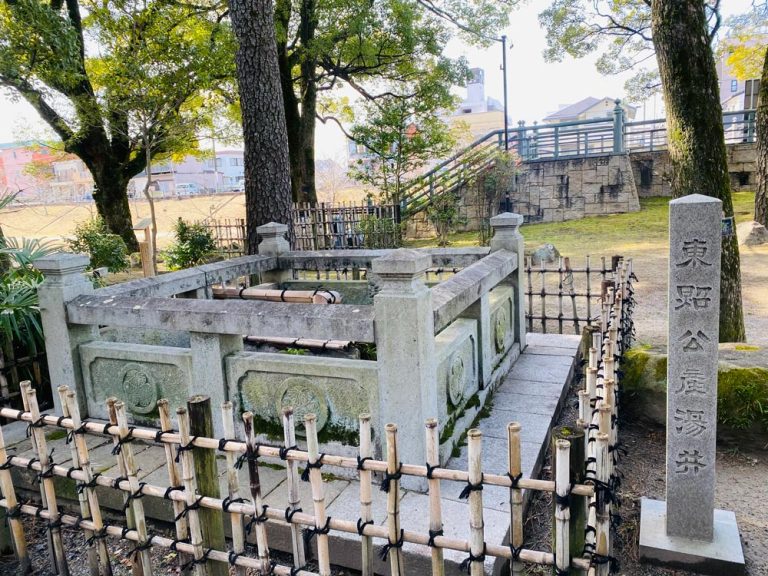


Discover Tokugawa Ieyasu’s incredible life story and achievements visiting Japan’s three largest cities: Tokyo, Nagoya and Osaka!
This tour takes you to Okazaki Castle, the birthplace of the first Edo Shogun, Tokugawa Ieyasu. Witness the decisive Battlefields of Sekigahara where Ieyasu gained control of the nation, and Osaka Castle, destroyed, then rebuilt by the Tokugawa. Visit the Tokugawa’s greatest Nagoya Castle, also National Treasures and World Heritage designated Nikko Toshogu Shrine and Kunozan Toshogu Shrine.
Samurai History & Culture Tours offers you full support by making individual arrangements getting you safely, efficiently and smoothly to difficult to find or access sites. We can also arrange for drivers making traveling efficient, enjoyable, hassle and worry free.
*Please refer to the itinerary section for the full tour schedule.

In 1600, Japan was split into two factions, and both sides clashed here in this narrow valley, in the center of Japan! The opposition Western forces had the greater numbers, the better, higher positions, and they had Ieyasu’s Eastern forces surrounded, yet Ieyasu celebrated his greatest victory after one of his toughest, most fearful battles.
See the command posts of the warlords, walk the battlefields where some 30,000 samurai were killed in a frantic six-hour battle. The stories, the scenes, and the museum too will fascinate and amaze you!

The greatest of shrines, for the greatest of Shogun! Ieyasu’s grandson, the third Shogun Iemitsu had this extravagant shrine built for his beloved grandfather, and had him enshrined as a deity here. See the magnificent architecture, the glorious colours and the grandiose use of gold. Search for the original Three Wise Monkeys in relief around the structures. Feel the opulence and power of the Tokugawa at Must See Nikko.

World Heritage listed Kunozan Toshogu Shrine, the actual grave of the Shogun Tokugawa Ieyasu, is another highlight. Not as lavish as Nikko, but just as elegant, perhaps even more spiritual. The added advantage is the Kunozan Shrines’ magnificent collection of Ieyasu’s private belongings, armour, weapons and treasures.
Arrive at Haneda or Narita Airports in Tokyo
Hotel near Shinagawa or Tokyo Station (e.g. Grand Prince Hotel Shin Takanawa)
See places related to Tokugawa Ieyasu and the powerful Tokugawa clan, starting with the Shogun’s mighty Edo Castle in the very heart of sprawling Tokyo, now the Imperial Palace and home of the Emperor. Admire the castle’s historical moats, stone walls, remaining gates, and turrets, and gain access to Edo Castle’s innermost compound, where the Shogun’s palace once stood to climb the stone base of Edo’s former tower keep. Visit the graves of generations of Tokugawa shoguns at the ancient and venerated Zojo-ji Temple, the Kan’eiji Temple, and Ueno Toshogu Shrine where Ieyasu is deified. Our expert guides make the trip a fascinating and valued experience, passing on their knowledge and passion to you!


Hotel near Shinagawa or Tokyo Station (e.g. Grand Prince Hotel Shin Takanawa)
Depart Tokyo early for Nikko, site of the magnificent Nikko Toshogu, a National Treasure and World Heritage listed shrine dedicated to the great Tokugawa Ieyasu. This is the most splendid of all shrines in Japan, a work of architectural and artistic grandeur. Return to Tokyo


Hotel near Shinagawa or Tokyo Station (e.g. Grand Prince Hotel Shin Takanawa)
Departing Tokyo we head to Shizuoka via Bullet Train to the World Heritage listed Kunozan Toshogu Shrine, and the actual grave of the Shogun, Tokugawa Ieyasu. Take the cable car ropeway to the top, or for a challenge, climb the 1,159 stone steps from the base of Mt. Kuno. Marvel at the splendor of the colorful yet elegant shrine and discover the secrets in the architecture and artistic devices. Pay your respects at Tokugawa Ieyasu’s imposing burial site and be mesmerized by the Kunozan Shrines’ magnificent collection of Ieyasu’s private belongings, and Tokugawa clan armour, weapons and treasures. Our expert guides make the trip a fascinating and valued experience, passing on their knowledge and passion to you!

Hotel near Shizuoka Station (e.g. Hotel Associa Shizuoka)
From Shizuoka Station we head to Hamamatsu, where Ieyasu lived for 17 years at Hamamatsu Castle, known as the Castle of Fortune. Visit the site of Ieyasu’s most terrifying loss in battle to warlord Takeda Shingen at the Battle of Mikatagahara and discover the stories along the route Ieyasu took fleeing back to Hamamatsu with the Takeda in hot pursuit. From Hamamatsu Station, take the Shinkansen to Toyohashi.

Hotel near Toyohashi Station (e.g. Hotel Associa Toyohashi)
See the battlefields of Nagashino-Shitaragahara, where the 38,000 combined samurai forces of Oda Nobunaga and Tokugawa Ieyasu faced off against 15,000 invading Takeda troops under Takeda Katsuyori in one of the greatest gun battles in samurai history. Samurai History & Culture Tours’ professional and dedicated guides and drivers can take you around to the most important and often difficult to access positions and command posts sites on the battlefield. Visit all the important sites of the most violent of samurai action, including the ruins of Nagashino Castle, and the Nagashino Castle Historic Site Preservation Museum’s collection of armor, weapons and battle artifacts. See the Shitaragahara decisive battlefield with its recreated stockades, where over 10,000 samurai were slaughtered in the half day gun battle. Learn more in the fascinating Shinshiro City Shitaragahara Historical Museum overlooking the main battlefield and featuring actual samurai armor, weapons and matchlock guns.

Hotel in Okazaki City (e.g. Okazaki New Grand Hotel)
Day 7 sees you touring Okazaki Castle, birthplace of Tokugawa Ieyasu, and the 4th largest castle of the Edo period. Visit the Matsudaira / Tokugawa clan temple, the Daiju-ji, with the graves of the Matsudaira, forebears to the Tokugawa, and the life-sized mortuary tablets of each of the Tokugawa Shogun. See the fortified Houzo-ji Temple, scene of the medieval Ikko Ikki riots, and the original Hatcho Miso Brewery — said to be the secret weapon of the Tokugawa troops — still making Ieyasu’s favorite food, sent to him regularly in Edo. Stay in Nagoya.


Hotel near Nagoya Station (e.g. Nagoya Marriott Associa Hotel)
Admire the world’s greatest collection of daimyo artifacts, armor, weapons, personal and daily items of the Tokugawa warlords in the superb Tokugawa Art Museum, home to numerous National Treasure designated items. Enjoy the daimyo gardens there before visiting the Tokugawa clan’s greatest Nagoya Castle, built at the peak of castle construction techniques. Learn about the secrets of Nagoya Castle, how and why it was constructed, and it’s hidden defensive capabilities. A must see is the magnificent Honmaru Goten Palace with its golden walls, said to be the pinnacle of samurai palace construction and decorative arts, built by the Shogun Tokugawa Ieyasu, for his son, the lord of the Owari (Nagoya) Tokugawa, the politically and financially strongest branch of the mighty Tokugawa clan.
Enjoy samurai cuisine, the unique and tasty Nagoya-meshi at Nagoya’s popular Kinshachi Yokocho area.


Hotel near Nagoya Station (e.g. Nagoya Marriott Associa Hotel)
Transfer from Nagoya to the site of the greatest samurai field battle in history, the battlefields of Sekigahara, where 160,000 samurai, split into East and West factions, fought a decisive six hour violent and close combat battle in 1600 for control of the nation. Learn about the historical, political and military action, and walk, cycle or be driven on a tour of the main general’s command posts to see just how close the fighting really was. Visit the new experience-based Gifu Sekigahara Battlefield Memorial Museum with next generation super screen and ground vision technology, fascinating exhibits and explanations making the battle come alive! Examine the Sekigahara Sengoku Armor Museum where you can see ashigaru armor, weapons, helmets, and samurai items gathered by individual collectors. As an option, Sekigahara Tourism Ambassador, Samurai History & Culture Tours producer, Chris Glenn can guide you around the battlefield giving you the most detailed and fascinating tour available. (Schedule confirmation required)

Hotel near Nagoya Station (e.g. Nagoya Marriott Associa Hotel)
From Nagoya we go via Bullet Train to Osaka and the impressive Osaka Castle. Osaka Castle, originally Toyotomi Hideyoshi’s most magnificent base of operations and symbol of supreme authority, was attacked by Tokugawa Ieyasu’s forces in 1614 and 1615, destroying the Toyotomi clan and cementing his grasp on the nation. In 1620, the victorious Tokugawa completely rebuilt Osaka Castle, making it bigger, stronger and even more impressive. The great stone walls and wide protective moats are a feat of engineering. The museum housed within the current keep contains one of Japan’s finest collections of historical items.

Hotel near Namba Station (e.g. Hotel Monterey Grasmere Osaka)
Returned from Kansai International Airport.
Please be aware that there may be occasions where we will not be able to accommodate your luggage in the vehicle. In such cases, we kindly ask that you make alternative arrangements to transport your luggage.
Comfortable clothing and shoes for walking.
This experience is booked on request. The owner of the experience will respond to the request within 5 days
This experience is booked on request. The owner of the experience will respond to the request within 5 days
| Cancellation Date | Cancellation Fee |
|---|---|
| No-show or cancellation after tour departure | 100% of the tour price |
| On the tour date | 50% of the tour price |
| 1 day prior to the tour date | 40% of the tour price |
| 2 to 7 days prior to the tour date | 30% of the tour price |
| 8 to 20 days prior to the tour date | 20% of the tour price |
| 21 or more days prior to the tour date | Free |
| Cancellation Date | Cancellation Fee |
|---|---|
| No-show or cancellation after tour departure | 100% of the tour price |
| On the tour date | 50% of the tour price |
| 1 day prior to the tour date | 40% of the tour price |
| 2 to 7 days prior to the tour date | 30% of the tour price |
| 8 to 20 days prior to the tour date | 20% of the tour price |
| 21 or more days prior to the tour date | Free |